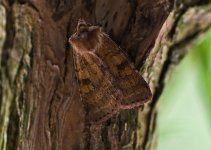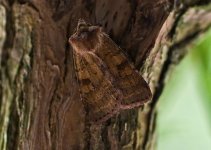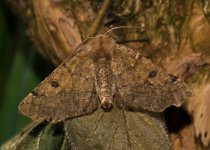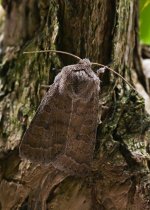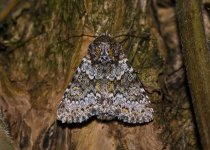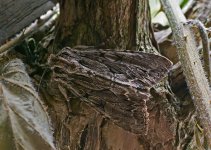DaveJones
Well-known member
Hi
Since i like photographing Moths, i purchased the excellent Tamron 90mm Macro AF. But since using it, an old problem has arisen, which i thought the specialised lens would eliminate.
For some reason, i can hardly get the whole subject sharp. Either the forelegs, the thorax, Antenna, Head or part of the wing remain distinctly out of focus (see attached pic).
I use the lens on either a D60 or D40 with the camera fixed to a tripod. I use either a delayed 5s or remote mode to remove any shake, with natural light as much as humanely possible.
I try and shoot in Auto with the camera setting on A. Shooting mostly around F8, though either up or down a couple of notches at 100-200 iso.
I will shoot manual, but the problem still remains.
Im really finding this frustrating. This is not a cheap game, and im fed up of some excellent shots being ruined by this.
Is it me or the settings?
Please note that the image has been sharpened, but you can still see the Out of focus area's.
Help urgently needed before shooting my next moth!!!
Since i like photographing Moths, i purchased the excellent Tamron 90mm Macro AF. But since using it, an old problem has arisen, which i thought the specialised lens would eliminate.
For some reason, i can hardly get the whole subject sharp. Either the forelegs, the thorax, Antenna, Head or part of the wing remain distinctly out of focus (see attached pic).
I use the lens on either a D60 or D40 with the camera fixed to a tripod. I use either a delayed 5s or remote mode to remove any shake, with natural light as much as humanely possible.
I try and shoot in Auto with the camera setting on A. Shooting mostly around F8, though either up or down a couple of notches at 100-200 iso.
I will shoot manual, but the problem still remains.
Im really finding this frustrating. This is not a cheap game, and im fed up of some excellent shots being ruined by this.
Is it me or the settings?
Please note that the image has been sharpened, but you can still see the Out of focus area's.
Help urgently needed before shooting my next moth!!!




